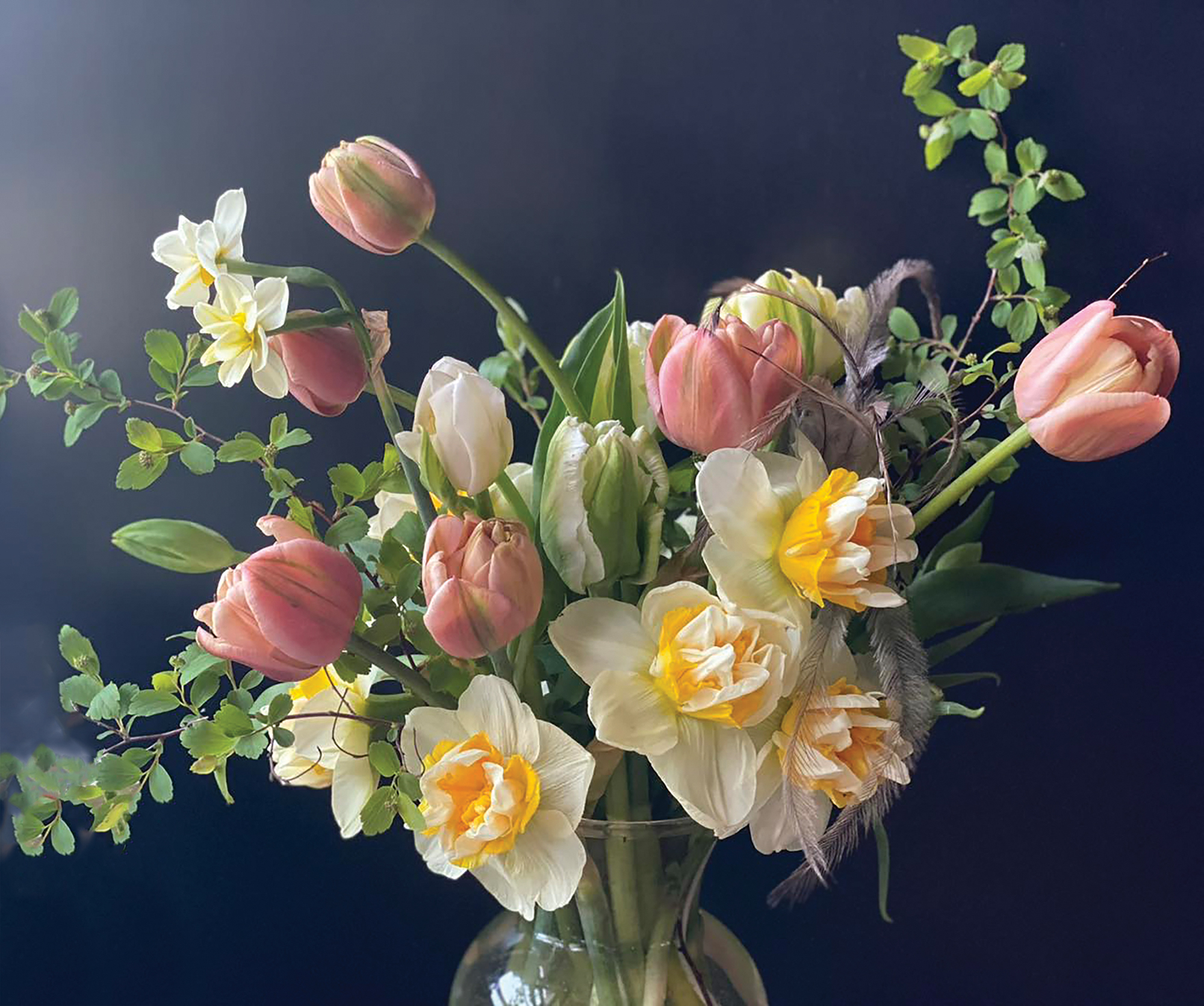A flower lover’s guide to bulbs, blooms, and bouquets
By Charla Burgess
Current Contributor
Do you find yourself watching the first shoots of spring grow greener and taller every day? On warm mornings, do you and your mug of coffee check the status of the tulips and daffodils, the crocus and hyacinths? It is hard not to count the markers of warmth and of sunny days when you endure the long stretch of winter’s gray skies that come as a trade-off of living on this cloud-covered side of the beautiful Big Lake.
When those tulip bulbs finally burst forth in their crowing of bright colors and verdant drama, it is tempting to gather armfuls to brighten the indoor spaces, calling for the dust and woodsmoke grime to shake out. Scientific studies show that flowers in your space lift mood, and there is no time when that is not more impactful than the Northland, as winter slowly loses its grip.
But wait. Keep visiting them in your morning quiet, as they wave happily in cool spring breezes.
Outside. Uncut.
As the heralds of spring, these stunning flowers are the romantic favorite of many, but did you know that cutting them means that they will not bloom again next year?
The bulbs need the foliage to produce energy for next year’s blooms, and you would have to cut such a short stem—above all of the leaves—in order to not zap the energy supply, and that would make it very difficult to create a bouquet.
So do not cut yours. Rather, keep those bulbs in your soil.
This is where your local farmer comes in:
· We compete. (Goodness, the tulip wars of old Dutch days have returned! “Farmers fight to grow and bring you the most beautiful specialty tulips with the longest vase life.”)
· We dig. (Big ol’ trenches. For the bulbs.)
· We guard. (The voles. The rabbits. The deer. The pests. The weather. Wire netting in the soil in the winter, to prevent voles snacking from underneath; netting above ground when the plants start to grow, to prevent rabbit and deer snacking.)
· We curse. (Farmers are not always so stoic.)
· We harvest. (We dig again, as tulips store better with their bulbs being attached rather than being cut, resulting in a longer vase life for you.)
· We arrange.
· You vote. (For local farms and businesses with your dollars when you buy yourself or someone you care for some beauty and specialness.)
Or innovate! For instance, I am not above digging up a clump of tulips, snowdrops, crocuses, or other spring beauties, bringing them inside to pot up in a dish with soil, moss, or a shallow bed of pebbles in water. They will continue to bloom inside, and then you can promptly replant them outside, when the blooms are spent. That way, you get to enjoy them again next year, which you would not be able to do if you simply cut their stems and bring them inside to a vase.
On that note, in this discussion of harbingers of spring, we would be remiss should we ignore the bright, cheerfulness of the daffodil.
The scent and double blossoms of some unique narcissus never fail to “wow,” but some care is needed, should you choose to bring a posy of their floral sunshine inside.

Daffodils have a sap that can actually kill other flowers in a vase. To avoid a floral massacre, make sure to condition your daffodils in water separately for a few hours, before adding them to your mixed bouquet. Then, do not cut their stems again before arranging with other flowers, unless you start the process over with placing them in a separate container of water for a few hours.
Speaking of your bouquets, always make sure to give your flowers—other than daffodils—a fresh cut before placing them in water. This allows them to drink up and stay hydrated.
Next, for any cut-flower arrangements, make sure to remove any leaves that will reside below the waterline—these leaves can breed bacteria and shorten the life of your blooms.
Finally, change the water every few days to keep your bouquet looking fresh and fabulous. Fresh water is key, for all. (If you would not drink the water yourself, do not do that to your flowers!) Also, the cooler you can keep your arrangements—and out of direct sunshine—the better. Some people even put their bouquets on a cool porch at night to help extend the vase life (not below freezing, of course).
Spring—and all its glory—is here. But, the next time that you find yourself snipping a tulip stem for a bouquet, remember, you are sacrificing future blooms for today’s beauty, so think about turning to your local cut-flower growers instead!
Lastly, when thinking about sipping your cup of coffee while among next spring’s blooms in your garden that you have retained, because you chose not to cut them this spring: you just might want to start ordering new bulbs now, in order to guarantee your selections—what with the volatile tulip market these days. (Did you know that the weather patterns in the Netherlands have created a tulip shortage worldwide? Think drought alternating with floods, increasing temperatures, and lack of enough cold vernalization time, all thanks to climate change.)
Landscape tulip tip: Darwin tulips tend to bloom for more continuous years than some of the fancier specialty tulip varieties. Feeding tulipshem in the spring with a mix of bone meal, blood meal, and compost or a slow-release balanced organic fertilizer will encourage sustained blooms for years to come.
P.S. Speaking of which, it is almost ramp season, and the same goes for being responsible about those “bulbs”—do not dig up nor cut the entire plant while foraging. There is so much flavor in the leaves, alone, that that is really all you need to flavor your dish; just take a leaf here and there from your woodland population to protect ramps for future generations.
Happy spring!
SIDEBAR
Meadowlark song.
Warmth of the sunshine
on the morning ramble,
in but one day,
has changed character.
And then, by the front step,
a crocus pushes up
to tell me it is true.




